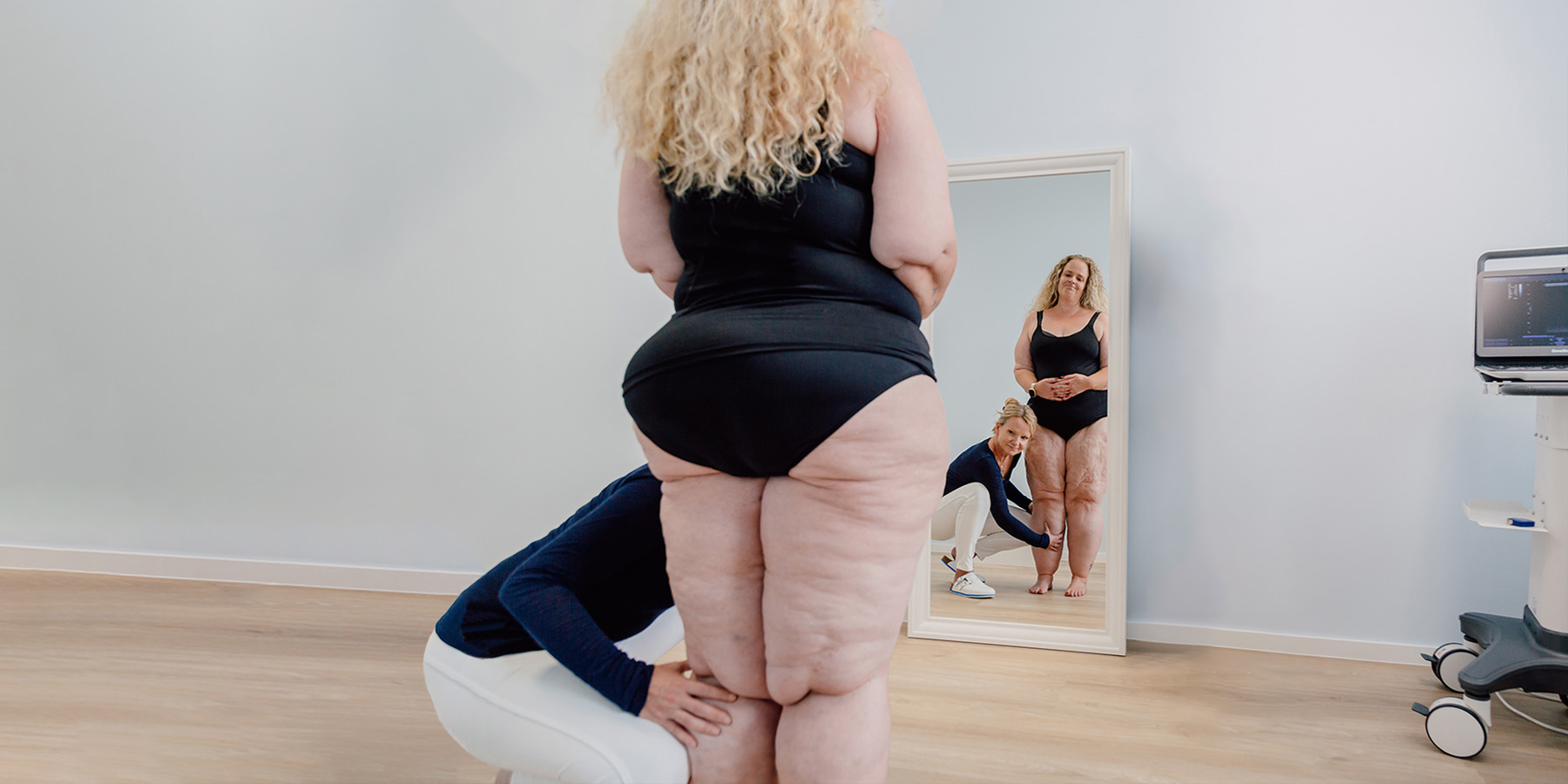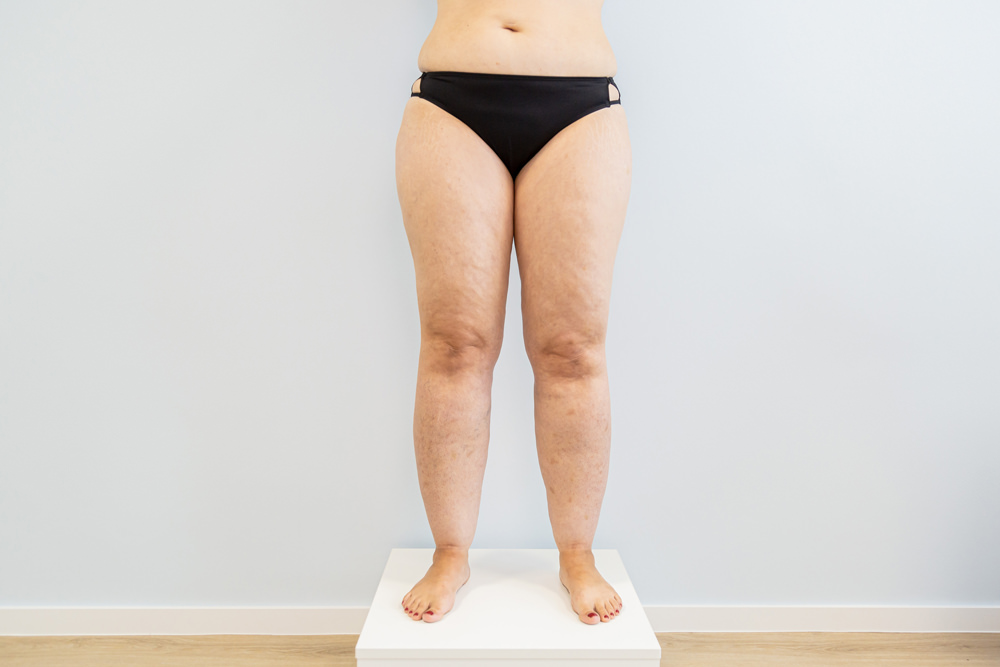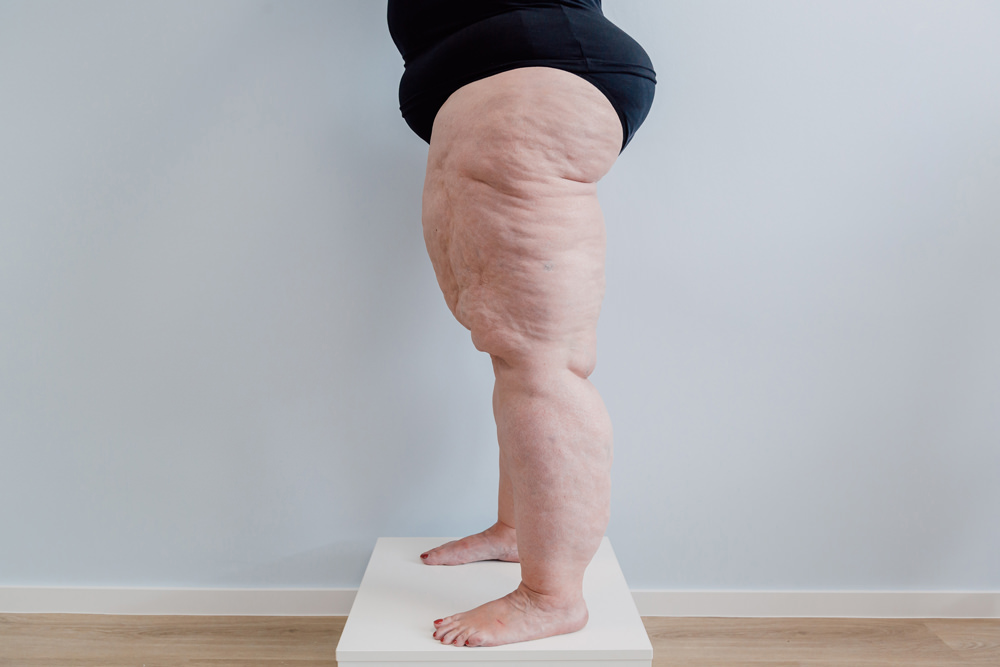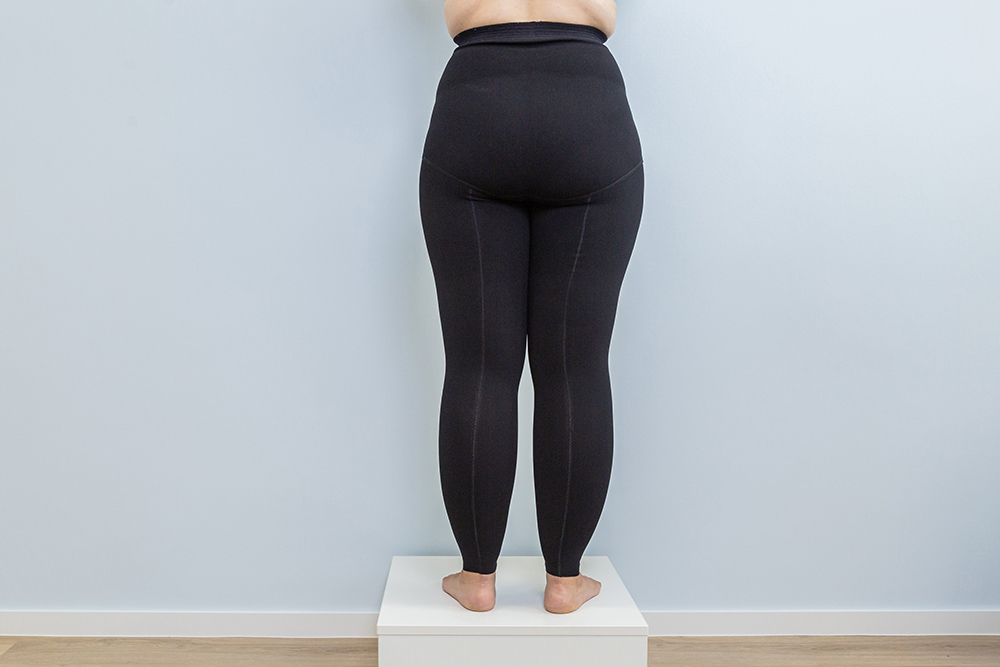Lipedema
The clinical picture of lipedema

Lipedema
The clinical picture of lipedema
Lipedema is a chronically progressive disease that occurs almost exclusively in women and is characterized as a fat distribution disorder with a noticeable disproportion between the trunk and extremities. The term consists of the words “lip” (Greek for fat) and “edema” (accumulation of fluid in the tissues). The causes of lipedema are not known, so a cure is not possible. However, with proper therapy, symptoms can be significantly improved.
Treatment initially consists of conservative measures, such as wearing flat-knit compression tights and performing lymphatic drainage (in the case of additional edema). In some cases, this is then supplemented or replaced by therapy using intermittent compression devices. Sustained and lasting success is achieved by surgical therapy in the form of liposuction (the permanent removal of fat cells).
Here we have summarized some information about the clinical picture for you in an easily understandable way. We also show you the possible therapeutic approaches we can offer as experts in the field.

What is lipedema?
Lipedema is a fat distribution disorder. It is also known as the saddle bag phenomenon or pillar leg due to its appearance. This disorder occurs almost exclusively in women – usually during puberty, pregnancy, or menopause – and can progress over time.
The main characteristic of lipedema is the symmetrical increase of fatty tissue on the legs (and arms) with a slender upper body. Affected persons have to struggle with severe pain and water retention in the tissue, which leads to considerable restrictions in their quality of life.
The visual disproportion between a slim upper body and a very voluminous lower body and arms is caused by the fact that most of the trunk as well as the hands and feet are not affected by the fat distribution disorder. This appearance, which sometimes causes stigmatization, can be extremely stressful for those affected – not only physically but also psychologically. Self-esteem is significantly lowered as a result.
Because of the similarities in symptoms, lipedema is often misdiagnosed as obesity or lymphedema and is not treated properly. It is important to emphasize that lipedema has nothing to do with obesity, so it cannot be influenced in the long term by exercise or an adapted diet. Therefore, it often takes years before the disease is diagnosed. Many sufferers only seek medical advice after an extremely long history of suffering – when the most varied sports and diet attempts have all failed. It is very crucial to treat the disease as early as possible in order to stop or at least delay its progression.

What are the signs of lipedema?
How can you tell that you are suffering from lipedema? The signs vary – in addition to clearly visible effects, there may be other individual complaints with varying degrees of severity that are caused by lipedema.
Possible signs of lipedema are
- a slender upper body with voluminous arms and legs
- heavy, swollen arms and legs
- severe pain
- tissue sensitivity to pressure
- increased sensitivity of the skin to touch
- being prone to hematomas
- deformities and wear and tear of the joints
- saddle bag type: the fatty tissue spreads mainly in the hip area and on the buttocks
- columnar type: the fatty tissue extends uniformly along the length of both legs with a fatty collar at the ankle
- painful fat tissue proliferation at the hip, knee, and ankle so that the joint contours are barely visible
- circumference of legs and arms increases despite sports and weight reduction
- obstruction when walking and chafing

How is lipedema treated?
The causes of lipedema are currently unknown. Therefore, there is no known cure. Our holistic approach to treatment aims to relieve the symptoms and prevent a progressive increase in fat deposits and secondary damage. It is very important to understand and accept that lipedema is a chronic disease that will accompany the affected person throughout one’s life. That is why the internal attitude, the relationship with oneself and the clinical picture are so important.
The central components of conservative therapy range from a healthy eating pattern and suitable sports (e.g., swimming) to compression treatment and manual lymphatic drainage in advanced stages.
The most effective treatment option is liposuction, which we perform with a great deal of experience and expertise. Liposuction can provide lasting and long-term relief of symptoms through the gentle but permanent removal of fat cells.
We have summarized everything you need to know about liposuction for you here.
Do you have any questions about our practice or our services?
Just give us a call or contact us by e-mail, and we will be glad to help you.
